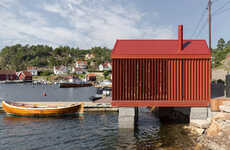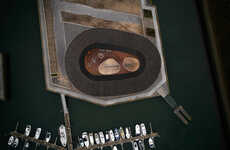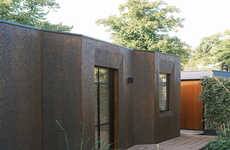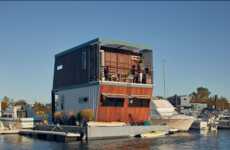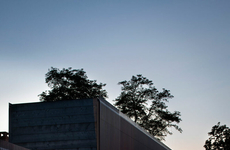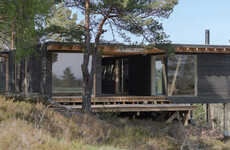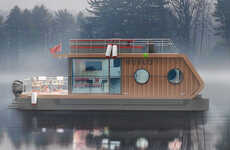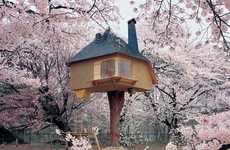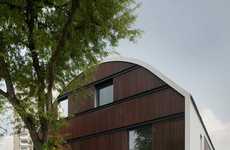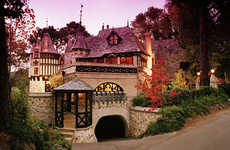
The Kebony Boat House is an Eco-Friendly Take on Coastal Architecture
Jana Pijak — October 13, 2012 — Art & Design
References: trestykker & frameweb
The Kebony Boat House by TreStykker Students is a compact coastal structure designed with sustainability in mind. The pop-up architecture piece has been built in the central harborfront in Oslo, Norway.
The wood-clad building is not only a functional boat house, but also serves as a functional venue for small theatrical performances and musical concerts. Named for its eco-friendly material, the Kebony Boat House is built from an alternative to tropical hardwood. The sustainable material is free from toxins and is durable and resistant to decay.
Oslo School of Architecture and Design and Bergen School of Architecture and NTNU in Trondheim teamed up for TreStykker, an independent workshop that aims to teach individuals about the importance of ecologically responsible architecture practices.
The wood-clad building is not only a functional boat house, but also serves as a functional venue for small theatrical performances and musical concerts. Named for its eco-friendly material, the Kebony Boat House is built from an alternative to tropical hardwood. The sustainable material is free from toxins and is durable and resistant to decay.
Oslo School of Architecture and Design and Bergen School of Architecture and NTNU in Trondheim teamed up for TreStykker, an independent workshop that aims to teach individuals about the importance of ecologically responsible architecture practices.
Trend Themes
1. Sustainable Coastal Architecture - Architects and designers are exploring eco-friendly building materials and practices to create functional structures that minimize environmental impact in coastal areas.
2. Multi-functional Pop-up Architecture - Designers are creating compact, flexible structures that serve multiple functions, such as the Kebony Boat House's dual use as a boat house and performance venue.
3. Collaborative Eco Workshops - Independent workshops like TreStykker bring together architects and designers to teach and promote ecologically responsible architecture practices.
Industry Implications
1. Construction and Building Materials - Companies can explore creating and marketing alternative, sustainable materials to replace conventional hardwoods and minimize environmental impact.
2. Eco-friendly Tourism and Hospitality - Innovative designers can develop functional, sustainable structures that enhance the coastal tourism experience while minimizing environmental impact.
3. Education and Training - Educational institutions and organizations can offer workshops and collaborative initiatives that promote and teach ecologically responsible architecture practices.
5.5
Score
Popularity
Activity
Freshness

